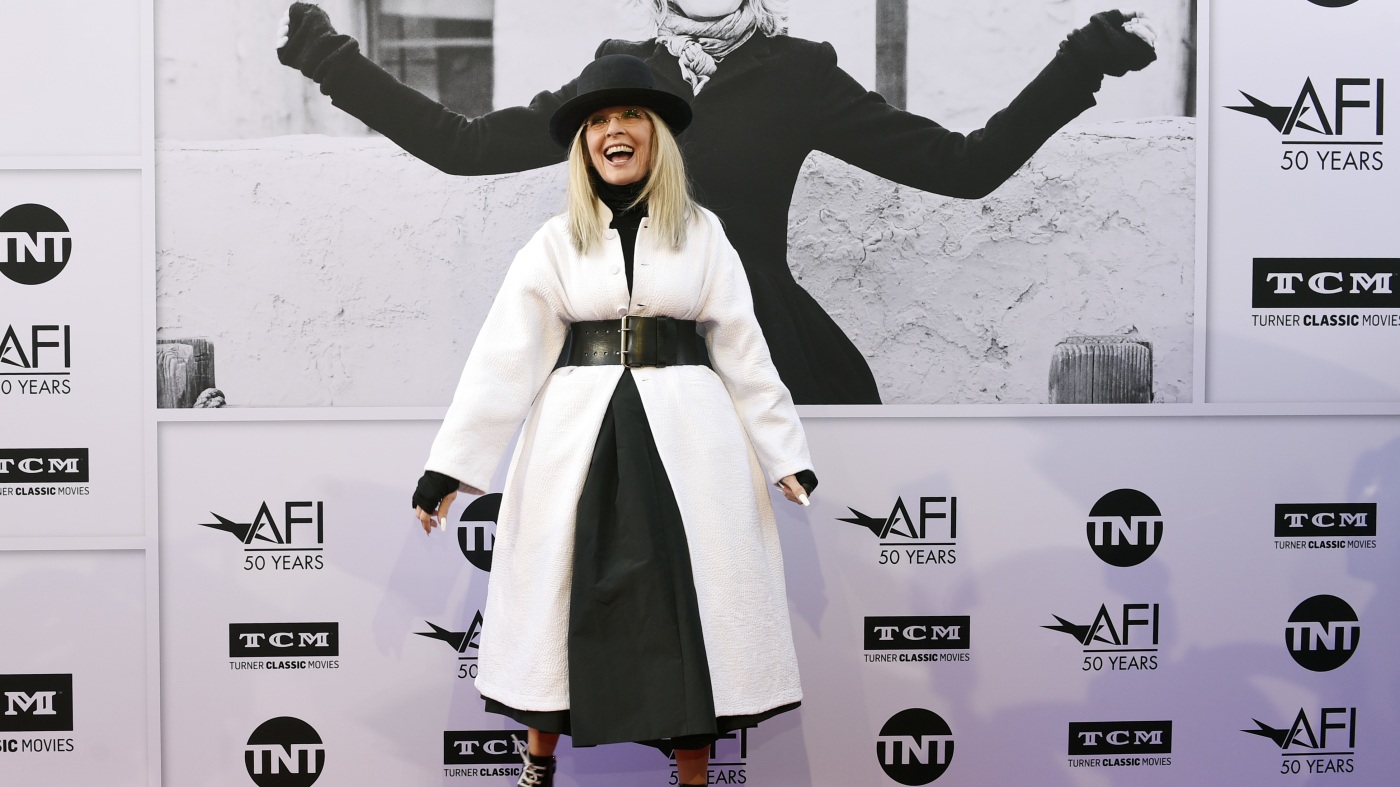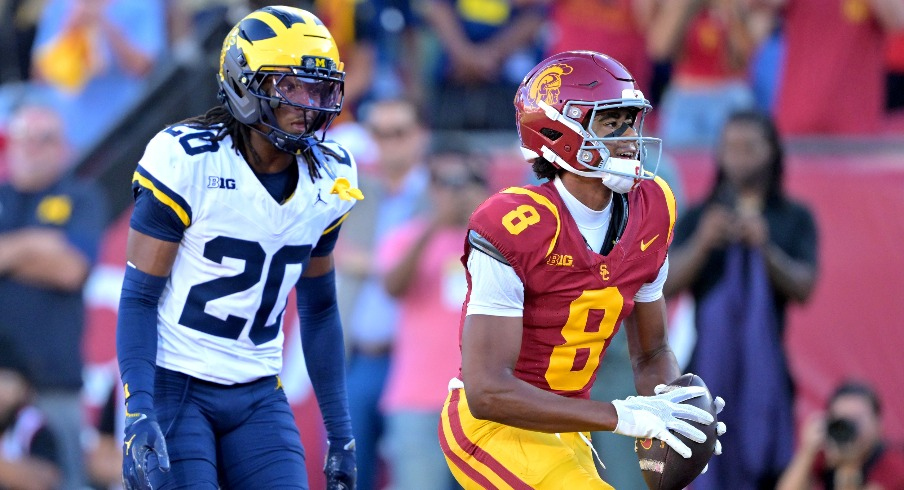Plenty of great female actors have starred in romantic comedies. Usually if they want to win an Oscar, however, they have to reach for more serious roles. The late Diane Keaton, who died unexpectedly this week, followed a reverse trajectory and made it look disarmingly natural. Her first major film role was in The Godfather, about as serious an American masterpiece as has ever been made. But that same year, she reprised the part of Linda, the object of a nerdy hero’s affection, in a film adaptation of Broadway’s Play It Again, Sam. (Keaton originated the role opposite playwright Woody Allen on the stage.) She continued to alternate serious dramas with romantic comedies throughout the ’70s, and it was the latter that won her an Oscar for best actress, changing the genre permanently.
That Oscar was for Annie Hall, co-written and directed by Allen, with Keaton as the title character, one half of the movie’s fractured love story. Allen and Keaton had been in a romantic relationship before making the film, and remained close friends for the rest of her life; in interviews, Keaton had characterized Annie as an idealized version of herself, through Allen’s eyes. It would be easy, then, to assume Keaton’s performance involves doing what came naturally to her. But there’s too much range in Keaton’s work, both between her Godfather performance and her Allen comedies and within Annie Hall itself, to dismiss her facility with romantic comedy as simply turning on the charm – though she was, of course, tremendously charming.
Annie Hall famously served as Allen’s transition between more gag-based broad comedies and a more naturalistic style. As such, it has plenty of gags, fantasy sequences, and a freewheeling patchwork of a relationship memoir in between some stinging insights into a doomed romantic relationship. (The script even included a murder mystery, presumably repurposed to some degree in Allen and Keaton’s 1993 reunion, Manhattan Murder Mystery.) Keaton, similarly, presides over a transition in American rom-coms, playing neither the screwball-era speed-talker or the bombshell ditz popularized in the 1950s. Instead, she mixes and matches aspects of both to create something entirely new that still reads as oddly contemporary today, interrupting her own boldness with her own false-start hesitations.
Watch, for example, the scene where Annie and Alvy Singer (Allen) first connect after a tennis game, fumbling over ping-ponging invitations for a ride (despite the fact that only one of them has a car). The banter is fast, but zig-zags around unpredictably, with Keaton soloing around her own discomfort before winding up in a cul-de-sac of “la di da”, a phrase that encapsulates her nervous whimsy. The movie physicalizes that sensibility in the next scene, as she makes blasé small talk while driving recklessly through Manhattan streets. Later, she centers herself singing It Had to Be You in a nightclub.
These aren’t examples of Annie acting erratic. Throughout the movie, there’s a dimensionality to her light zaniness – her hippie-hangover willingness to try drugs, her panic over lobsters and spiders, her refusal to be manipulated by Alvy’s attempts to shape her into someone more superficially serious (which for him means death-obsessed). At first, Annie might seem like an odd character to win an Oscar; she’s the romantic lead in a movie seen from a man’s point of view, and the central couple’s arc doesn’t bend toward either changing enough accommodate the other. Yet Annie does change, in ways both observable and unknowable. She just doesn’t become a more suitable partner for Alvy. Plenty of later rom-coms stole the superficial stuff – neurotic hang-ups, quirky fashions – without quite emulating Annie’s ultimate independence.
Maybe Keaton was wary of that tendency. After her working relationship with Allen ended, she took a break from rom-coms; Baby Boom is really her only one from the entirety of the 1980s. But during her absence, Annie Hall, the character perhaps moreso than the loosely structured movie, became a model for the genre. Meg Ryan, for example, owes most of her rom-com career to Keaton’s ability to play smart and flibbertigibbet simultaneously. This made Keaton seem like a permanent rom-com queen even as she was actually playing more wives (whether happily, as in Father of the Bride, or less so, as in The First Wives Club) and/or moms (see The Family Stone or Because I Said So) than single gals falling in love. Even in her reunion with Allen, they’re a long-married couple brought closer together by comic amateur sleuthing – and she slips into that role easily, beautifully.
But Keaton did have another major rom-com hit in 2003 with Something’s Gotta Give, as a playwright in love with a younger-dating cad (Jack Nicholson, naturally). The result? Her final Oscar nomination, and a whole subgenre of romances where older women (usually played by movie stars, but still!) reassert their romantic and/or social agency. Part of the reason her death seems like such a shock is that Keaton was still making those movies as recently as last year, a constant multiplex presence. Now audiences will be pivoting from taking that presence for granted to realizing what an enormous influence she was on the romantic comedy as we know it. If it’s harder to think of present-day versions of Meg Ryan or Goldie Hawn who similarly follow in Keaton’s footsteps, that’s probably because it’s rare for a performer of Keaton’s skill to dedicate herself to a genre that’s mostly been streaming fodder for a while now.
Consider: there are 10 living female actors who received at least four best actress nominations, including Nicole Kidman, Jane Fonda and Ellen Burstyn. It’s rare for one of those roles to originate in a romantic comedy, let alone half of them, as was the case for Keaton. Because her persona became so familiar, it may have been easy to overlook just how much nuance and care Keaton brought to a genre better known for its star turns. She had the requisite star quality too, and depended on it plenty in movies like the Book Club series (where she lives the obvious dream of the Adam Sandler crew and literally plays a character called Diane). But she also played characters like Annie Hall, Erica in Something’s Gotta Give, and the more aloof Mary in Manhattan with a passion, at once comic and touching, missing from more plastic imitations of Annie or Nancy (Meyers, who only directed Keaton once, but through her writing became as associated with her later period as Allen was with her earlier stuff). Maybe she was able to carry that disappointment and disillusionment from the Godfather movies with her, subtly grounding her later roles. Or maybe comedy really is more complicated to play than drama. Regardless, it’s no wonder she was so associated with romance, despite a greater range. Keaton’s characters may have been deceptively difficult to pin down, but like her, they were easy to love.
Source link

